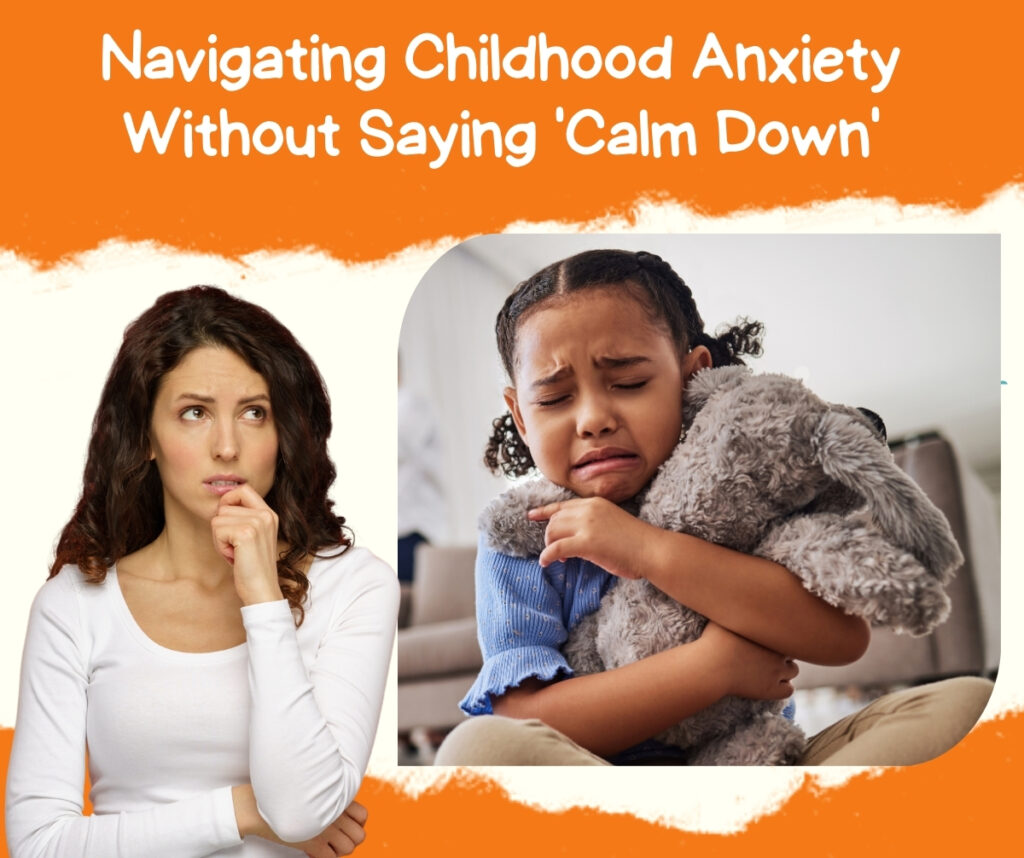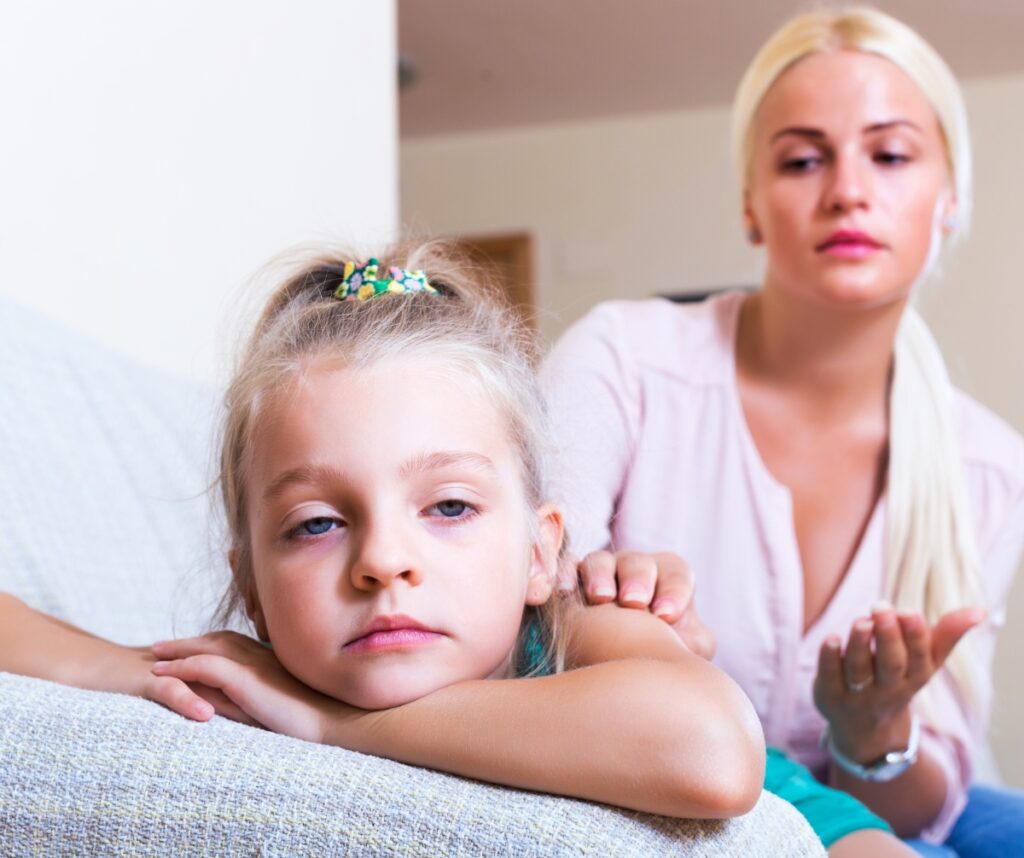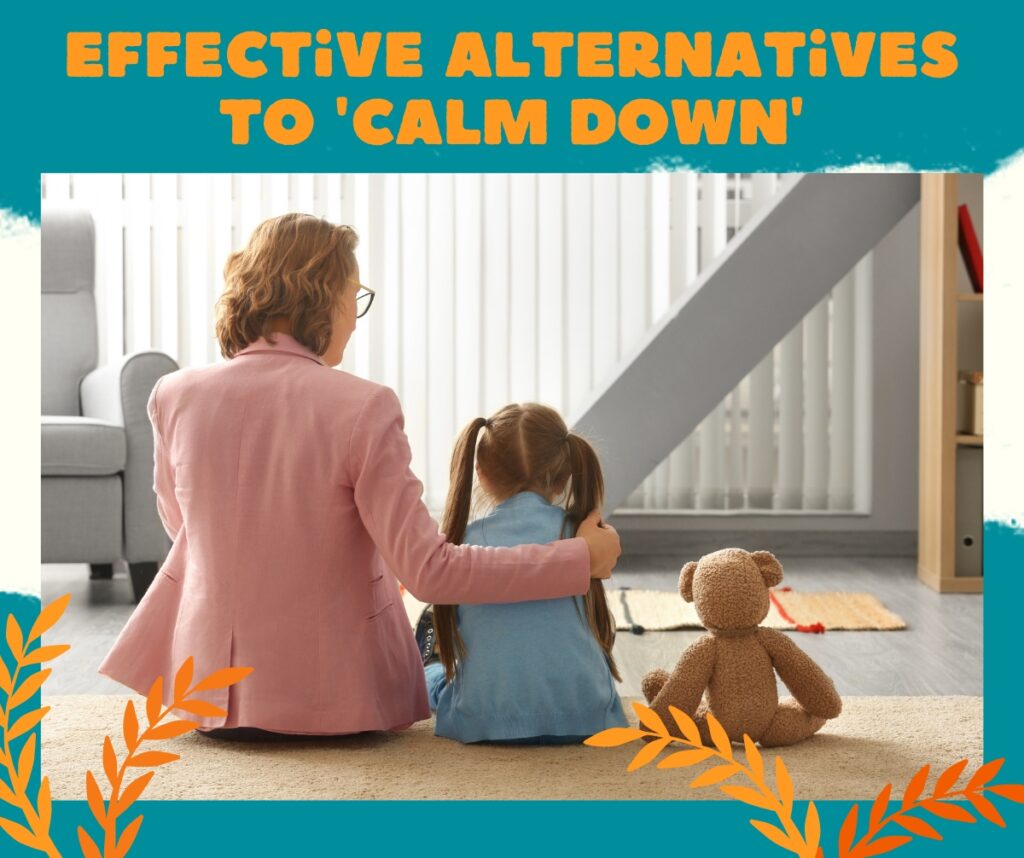When a child feels anxious, our go-to phrase often is, “Just calm down,” but does it really help? Spoiler alert: It usually doesn’t.

Strategies for Easing Childhood Anxiety Without ‘Calm Down’
Instead, it can leave the child feeling misunderstood and even more anxious. So, what’s the alternative? Let’s dive into some compassionate and effective strategies.
Understanding what anxiety looks like in kids is crucial. It’s not always the classic hand-wringing or nail-biting. Sometimes it’s irritability, sleep issues, or even tummy aches. Recognizing these signs is the first step in providing the right support.
Telling a child to calm down is a bit like telling a storm to stop being rainy—it’s not that helpful. Instead, our words should provide a safe harbour in their stormy moments. This approach not only validates their feelings but also helps them develop resilience and emotional intelligence.
Effective Alternatives to ‘Calm Down’ in Easing Childhood Anxiety
- Acknowledge Their Feelings
- Starting with a phrase like “I see you’re really upset/scared about this,” grabs their attention immediately, signaling that their emotions are valid and noticed.
- This approach in easing childhood anxiety not only demonstrates empathy but also builds a connection, showing genuine concern for their state of mind.
- By acknowledging their feelings, you’re taking the first step in creating a supportive environment where they feel understood and less alone.

- Breathe Together
- Suggesting, “Let’s take some deep breaths together,” serves as an interesting and engaging way to introduce a calming technique.
- Deep breathing is a scientifically backed method to help soothe the nervous system, offering a simple yet effective strategy for regaining composure in childhood anxiety.
- This shared activity not only helps in reducing stress but also strengthens your bond, showcasing a united front in tackling discomfort.
- Offer Choices
- By asking, “Would you like to talk about it, or would you prefer some quiet time?” you spark their curiosity by providing options, which can be empowering.
- This gesture respects their autonomy, allowing them to feel in control during a vulnerable moment.
- It encourages them to reflect on their needs, fostering a sense of agency and participation in their own coping process.
- Use Distraction Wisely
- Proposing a distraction, such as a walk or a game, with “Let’s go for a walk or play a game. How does that sound?” creates a desire for a positive shift in focus.
- This strategy provides a gentle escape from overwhelming emotions in childhood anxiety, offering a temporary reprieve that aids in regaining perspective.
- Engaging in a shared activity not only diverts attention from stressors but also promotes bonding through shared experiences.
- Provide Reassurance
- Offering reassurance with “I’m here with you, no matter what,” brings a profound sense of security and comfort.
- This simple statement is powerful in its ability to convey unwavering support and solidarity.
- It reassures them that they are not alone in their struggles, fostering an environment of trust and safety.
Empowering kids with a variety of coping strategies is like giving them a toolbox for handling life’s ups and downs. From mindfulness exercises to creative outlets like drawing or music, the key is to find what resonates with them.

Remember, the goal isn’t to eliminate anxiety entirely—after all, it’s a natural human emotion. Instead, it’s about teaching kids how to navigate their feelings in a healthy way.
And by choosing empathy over simplicity when they’re in the throes of anxiety, we’re not just helping them in the moment; we’re equipping them with skills for a lifetime.
In a world that often prioritizes quick fixes, taking the time to truly understand and support our kids through their anxious moments is a profound act of love.
So next time the storm clouds gather, let’s skip the “calm down” and opt for something far more powerful: our presence, our patience, and our unwavering support.



